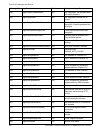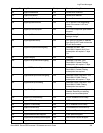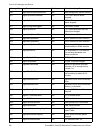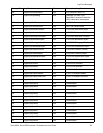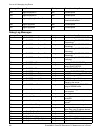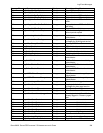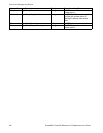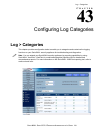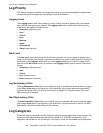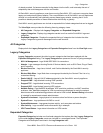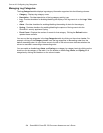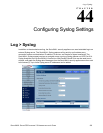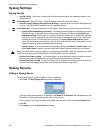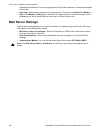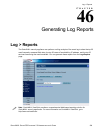292
SONICWALL SONICOS 2.5 ENHANCED ADMINISTRATOR’S GUIDE
C
HAPTER
43:
Configuring Log Categories
Log Priority
This section provides information on configuring the level of priority log messages are captured and
corresponding alert messages are sent through e-mail for notification.
Logging Level
The Logging Level control filters events by priority. Events of equal of greater priority are passed,
and events of lower priority are dropped. The Logging Level menu includes the following priority
scale items from highest to lowest priority:
• Emergency (highest priority)
•Alert
• Critical
• Error
• Warning
•Notice
• Informational
• Debug (lowest priority)
Alert Level
The Alert Level control determines how E-mail Alerts are sent. An event of equal or greater priority
causes an E-mail alert to be issued. Lower priority events do not cause an alert to be sent. Events are
pre-filtered by the Logging Level control, so if the Logging Level control is set to a higher priority
than that of the Alert Level control, only alerts at the Logging Level or higher are sent. Alert levels
include:
• Emergency (highest priority)
•Alert
• Critical
• Error (lowest priority)
•None (disables e-mail alerts)
Log Redundancy Filter
The Log Redundancy Filter allows you to define the time in seconds that the same attack is logged
on the Log > View page as a single entry in the SonicWALL log. Various attacks are often rapidly
repeated, which can quickly fill up a log if each attack is logged. The Log Redundancy Filter has a
default setting of 60 seconds.
Alert Redundancy Filter
The Alert Redundancy Filter allows you to define the time in seconds that the same attack is logged
on the Log > View page as a single entry in the SonicWALL log before an alert is issued. The Alert
Redundancy Filter has a default setting of 900 seconds.
Log Categories
SonicWALL security appliances provide automatic attack protection against well known exploits. The
majority of these legacy attacks were identified by telltale IP or TCP/UDP characteristics, and
recognition was limited to a set of fixed layer 3 and layer 4 values. As the breadth and sophistication



